Name Name Planet
In the solar system the planets are divided into 2 group, namely the inner planets where the inner planets consist of the planet Mercury, Venus, Earth, & Planet Mars. While the outer planet consists of the planet Jupiter, Neptune, Saturn, Uranus. For more details, see our explanation regarding the material of the names of the planets including the order of the planets, Features, Like, Pictures and Explanations.
Table of Contents
Definition of Planets
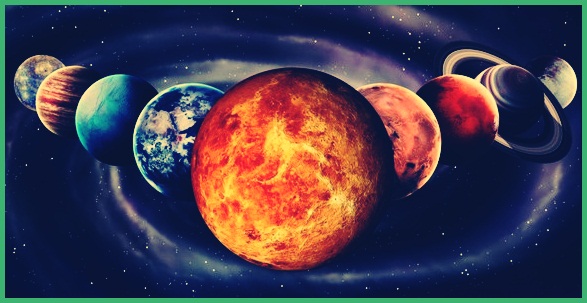
A planet is an astronomical object or celestial body that orbits a star that is large enough to have its own gravitational pull, not large enough to create thermonuclear fusion, and has cleared its orbit of planetesimals.
Planets are also members of the solar system that have certain characteristics or have their own characteristics.
Planets that completely surround the center of the solar system, in this case the sun, in one rotation are called revolutions.
The time needed by the planet to make one revolution is called the period of revolution or also known as one planetary year.
Not just evolve, planets are also able to orbit or rotate according to their axis which is called rotation or rotation.
The time needed to do one rotation / rotation is called the rotation period.
In solar system planets are divided into 2 group, namely the inner planets where the inner planets consist of the planet Mercury, Venus, Earth, & Planet Mars.
While the outer planet consists of the planet Jupiter, Neptune, Saturn, Uranus. From 2 This group of planets has its own characteristics.
Then what are the characteristics of the inner and outer planets ? The following are the characteristics possessed by 2 planetary group :
Characteristics of the Inner Planets :
- Formed from rocks & metal
- The inner planets have a solid surface
- the inner planets do not have rings
- And has a few satellites.
Characteristics of the Outer Planets :
- The outer planets were formed from hydrogen & helium
- It has rings and a thick layer of gas/atmosphere
- Has a fairly large number of satellites.
Name Name Planet
1. Mercury
2. Venus.
3. Earth.
4. Mars
5. Jupiter.
6. Saturn.
7. Uranus.
8. Neptune.
The order of the planets in the solar system and their characteristics :
1. Mercury
Mercury is the smallest planet that is in solar system and also a planet that has a close distance to the Sun, namely with a period of revolution 88 day.
The brightness of the planet ranges between -2 s/d 5,5 in magnitude will appear, however, it is not easy to see because it is caused by the point of view with a small sun, namely with the farthest range of 28,3 ° .
Mercury can only be seen at sunrise and at sunset.
Not too much data that can be retrieved about Mercury because only 1 spacecraft capable of or who have approached it is the Mariner 10 in year 1974 s/d 1975.
Mariner 10 only managed to map approx 40 – 45% from the planet's surface.
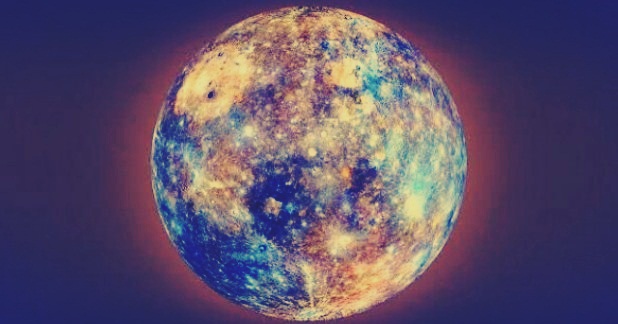
Characteristics of the Planet Mercury
- Distance from the sun : 57 million Km
- Surface area : 7,48 x 107 km2
- Diameter : 4879,4 km
- Volume : 6,083 x 1010 km3
- Massa : 3,3011 x 1023 kg
- Gravity : 3.7 m/s2
- Average temperature : 340 Kelvin (K)
- Number of Satellites : Has no satellite
- Rotation time : 59 day
- Revolution time : 88 day
2. Planet Venus
Venus is the second closest planet to the sun after the planet Mercury. Planet venus orbiting the Sun takes as long 224,7 earth day.
This planet has no natural satellites and its name comes from the goddess of love and beauty in Roman mythology.
Meanwhile, in other myths this planet is known by the name of Aphrodite & Etruscan deity Turan originating from Greek mythology.
other than that, Venus has a direction of rotation that is opposite to the direction of rotation of the other planets.
And also the period of rotation of Venus is longer than the period of its revolution around / around the sun.
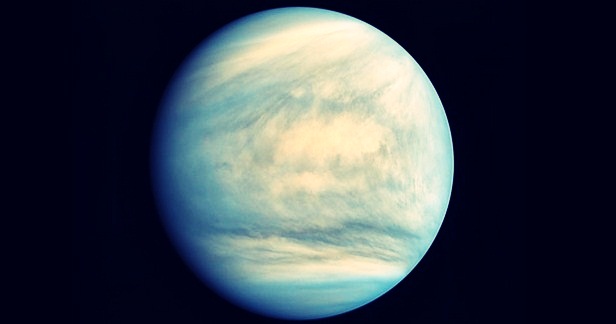
Characteristics of the Planet Venus
- The planet's distance from the sun : 108 million kilometers
- Surface area : 4,6023 x 108 km2
- Diameter : 12103,6 km
- Volume : 9,2843 x 1011 km3
- Massa : 4,8675 x 1024 kg
- Gravity : 8,87 m/s2
- Average temperature : 737 Kelvin
- Number of Satellites : Has no satellite
- Rotation time : 243 day
- Revolution time : 225 day
3. Planet Earth
Earth is the third order planet from 8 planets in the Solar System. Planet Earth is estimated to be old 4,6 Billion years.
The distance between Planet Earth and the sun is: 149.6 million Km or 1 astronomical unit (AU).
Earth has a layer of air and also a magnetic field called (magnetosfer) which serves to protect the Earth's surface from the solar wind, ultra violet light, as well as particles and radiation from outer space.
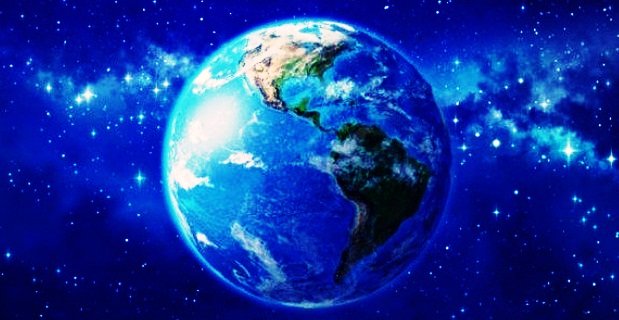
Characteristics of Planet Earth
- The planet's distance from the sun : 150 million kilometers
- Surface area : 510 million km2
- Have Diameters : 12742 km
- Volume : 1083,21 x 1012 km3
- Massa : 5972,37 x 1024 kg
- Gravity : 9,8 m/s2
- Average temperature : 288 Kelvin
- Number of Satellites : 1
- Rotation time : 24 jam
- Revolution time : 365 day
4. Planet Mars
Mars is the closest planet in order to the 4th from the Sun. Which is the name of this planet taken from the name of the ancient Greek god for war.
This planet is also called the red planet or red planet because of its reddish appearance.
Surrounding environment Planet Mars friendlier to life when compared to the state of Planet Venus.
Nevertheless, conditions and conditions are not quite ideal for living things (man).
Low air temperature and low air pressure, coupled with the condition of the air, most of which are carbon dioxide, this is what requires humans to use breathing apparatus if they want to live there.
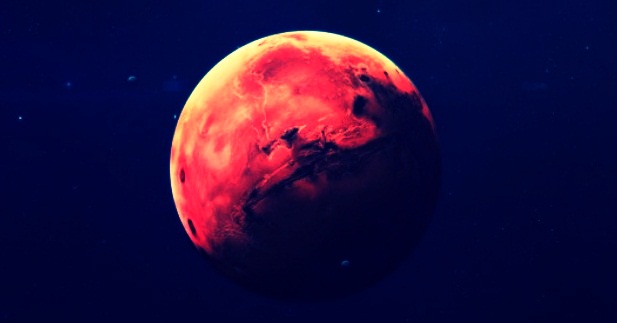
Characteristics of the Planet Mars
- The planet's distance from the sun : 230 million Km
- Surface area : 145 million km2
- Diameter : 6794 km
- Volume : 1,6318 x 1011 km3
- Massa : 6,417 x 1023 kg
- Gravity : 3,7 m/s2
- Average temperature : 210 Kelvin
- Number of Satellites : 2
- Rotation time : 25 jam
- Revolution time : 687 day
5. Planet Jupiter
Jupiter is the fifth closest planet from the sun after Mercury, Venus, Earth, and Planet Mars.
The distance between Jupiter and the Sun is 778,3 million km. other than that, Jupiter is the largest and heaviest planet because this planet has a diameter 14.980 km with mass 318 times the mass of the earth.
The period of rotation of the planet Jupiter is 9,8 jam, while for the period of revolution that is 11,86 year.
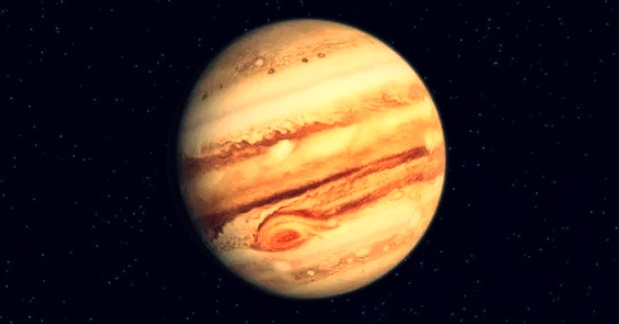
Characteristics of the Planet Jupiter
- The planet's distance from the sun : 778 million kilometers
- Surface area : 6,142 x 1010 km2
- Have Diameters : 142984 km
- Volume : 1,43 x 1015 km3
- Massa : 1,898 x 1027 kg
- Gravity : 24,8 m/s2
- Average temperature : 165 Kelvin
- Number of Satellites : 79
- Rotation time : 10 jam
- Revolution time : 11 year
6. Planet Saturnus
Saturn is a planet in the solar system where this planet is also known as a ringed planet.
Saturn is very far from the Sun, This is why Saturn is not clearly visible from Earth.
This planet has evolved over time 29,46 year. Uniquely, each 378 day, Saturn, Buni and the Sun will be in a horizontal line or in a straight line.
Apart from evolving, This planet also rotates in a short time, that is 10 jam 14 minute.
Characteristics of the Planet Saturn
- The planet's distance from the sun : 1,4 billion kilometers
- Surface area : 4,27 x 1010 km2
- Have Diameters : 120536 km
- Volume : 8,271 x 1014 km3
- Massa : 5,683 x 1026 kg
- Gravity : 10,44 m/s2
- Average temperature : 134 Kelvin
- Number of Satellites : 62
- Rotation time : 11 jam
- Revolution time : 29 year
7. Planet Uranus
Uranus is the 7th planet closest to the Sun, besides that this planet is also the 3rd largest and 4th heaviest planet in the Solar System.
This planet comes from the name of the sky god, from ancient Greece, namely Uranus (Οὐρανός) who is the father of Saturn (kronos) and the grandfather of Planet Jupiter (Zeus).
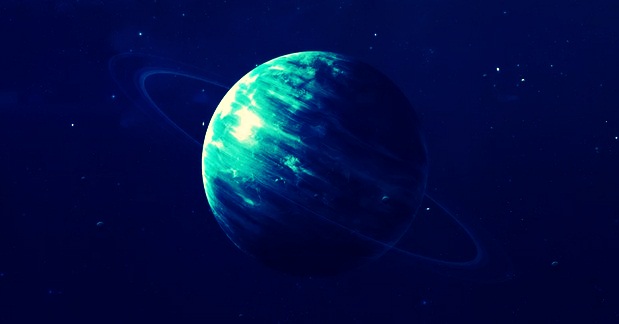
Characteristics of the Planet Uranus
- Surface area : 8,116 x 109 km2
- Have Diameters : 50724 km
- Volume : 6,83 x 1013 km3
- Massa : (8.6810 ± 0.0013) x 1025 kg
- Gravity : 8,69 m/s2
- Average temperature : 76 Kelvin
- Number of Satellites : 27
- Rotation time : 17 jam
- Revolution time : 84 year
8. Planet Neptune
Neptune is the planet that is farthest from the sun. The origin of the planet's name comes from the Roman god of the seas.
Neptune is the 4th largest planet by diameter and the 3rd largest by mass.
Namely the mass of the planet Neptune was recorded 17 times larger than planet Earth, and slightly larger than the planet Uranus.
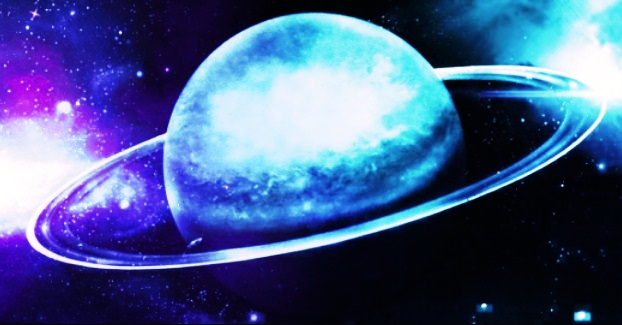
Characteristics of the Planet Neptune
- Distance from the sun : 4,5 billion kilometers
- Surface area : 7,168 x 1013 km2
- Gravity : 11,15 m/s2
- Average temperature : 72 Kelvin
- Have Diameters : 49530 km
- Volume : 6,254 x 1013 km3
- Massa : 1,024 x 1026 kg
- Number of Satellites : 14
- Rotation time : 16 jam
- Revolution time : 165 year
Names of Planets in Order :
1. Mercury
2. Venus.
3. Earth.
4. Mars
5. Jupiter.
6. Saturn.
7. Uranus.
8. Neptune.
1. Outer planets are planets that are beyond the asteroid line, and has a great distance from the sun, The outer planets consist of the planet Jupiter, Saturn, uranus, and neptune
2. Inner planets is a planet that is within the scope of an asteroid that is close to the sun, The inner planets consist of the planet Mercury, venus, earth, and mars
Characteristics of the Inner Planets
1. Formed from rocks & metal
2. The inner planets have a solid surface
3. the inner planets do not have rings
4. And has a few satellites.
Characteristics of the Outer Planets
1. The outer planets were formed from hydrogen & helium
2. It has rings and a thick layer of gas/atmosphere
3. Has a fairly large number of satellites.
That's our explanation Material Name Name Planet and its Characteristics. Don't forget to always visit our website so that you can get a lot of knowledge. Thank you.
Also read other articles :
- Southeast Asia Map
- Indonesian map
- World map
The post Nama Nama Planet appeared first on YukSinau.co.id.
